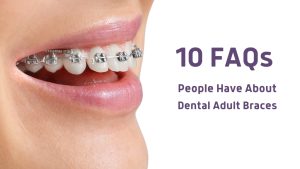More About Legacy Orthodontics
Table of ContentsSome Known Details About Legacy Orthodontics Excitement About Legacy OrthodonticsSome Known Details About Legacy Orthodontics Legacy Orthodontics - TruthsLegacy Orthodontics Fundamentals Explained
In enhancement, we use flexible therapy routines, adaptable payment options and an enjoyable, enjoyable experience.An orthodontist is a dental expert trained to diagnose, avoid, and treat teeth and jaw abnormalities. They deal with existing conditions and are educated to recognize issues that might establish in the future. Orthodontists collaborate with individuals of any ages, from children to grownups. People commonly associate a perfect smile with health.
Malocclusion, or misaligned teeth, can lead to oral problems, including tooth degeneration, periodontal disease, and hard or excruciating chewing. Not everybody is born with straight teeth. If you have a bad bite or big areas in between your teeth, you might desire to seek advice from a dental expert focusing on orthodontic treatment.
The Greatest Guide To Legacy Orthodontics
( Image Credit Scores: DigitalVision/Getty Images) Orthodontists make use of fixed and removable dental gadgets, like dental braces, retainers, and bands, to alter the setting of teeth in your mouth. Orthodontic therapy is for dental problems, consisting of: Misaligned teethBite troubles, like an overbite or an underbiteCrowded teeth or teeth that are also far apartJaw misalignmentThe objective of orthodontic treatment is to improve your bite.
A healthy bite guarantees you can consume, chew, and speak properly. While you may think about orthodontists as mainly for kids or teenagers who need braces, they can fix dental issues at any kind of age. Orthodontists participate in university, oral college, and orthodontic school. After graduation, they invest 2 or 3 years in an orthodontic residency program.
All orthodontists are dental experts, yet not all dentists are orthodontists. Orthodontic residency programs offer intensive, focused direction for oral experts. They concentrate on 2 areas: Exactly how to properly and safely move teeth Just how to effectively lead development in the teeth, jaw, and faceOnce an orthodontist has actually finished training, they have the option to come to be board accredited.
The Ultimate Guide To Legacy Orthodontics
Malocclusion leads to tooth overcrowding, an askew jaw, or irregular bite patterns. Malocclusion is typically treated with: Your orthodontist affixes steel, ceramic, or plastic square bonds to your teeth.
Some people require a headwear to aid relocate teeth into line with stress from outside the mouth. A retainer is a customized tool that maintains your teeth in location.
They can develop added area in the mouth without having to draw teeth. Orthodontists use wires, surgical screws, or plates to support your jaw bone.
You might need to see an orthodontist if you have: Crowding or not adequate room for all of your teethOverbite, when your upper teeth come by your bottom teethUnderbite, when your base teeth are also far forwardSpacing or issues with gapsCrossbite, which is when your upper teeth fit behind your bottom teeth when your mouth is closedOpen bite or a vertical void in between your front base and top teethMisplaced midline, when the facility of your base and top teeth do not align Fixing a dental malocclusion can: Make biting, chewing, and speaking easierImprove the proportion of our face and your overall appearanceEase discomfort from temporomandibular joint disordersSeparate your teeth and make them less complicated to clean up, assisting stop dental cavity or cavities It's frequently a dental professional who first notices misaligned teeth during a routine examination.
An Unbiased View of Legacy Orthodontics

During your first orthodontic assessment, you'll likely have: An oral examPhotos taken of your face and smileDental X-raysPanoramic (360 degree) X-rays of your face and headImpressions to produce molds of your teethThese examinations will certainly help your orthodontist recognize just how to continue with your therapy. leesburg invisalign. An orthodontist is a dental practitioner that's had training to treat your teeth and jaw
An orthodontist is focused on your bite, so something like a damaged tooth would be handled by a dental expert. Orthodontists are focused on your bite, or the means your teeth fit together, and the straightness of your teeth.
Ever wondered just how stars always seem to have completely lined up teeth? The response typically hinges on the competent hands of an orthodontist. What specifically does an orthodontist do? Orthodontists are oral specialists who concentrate on dealing with abnormalities in the teeth and jaws. Their proficiency goes past simply creating a beautiful smile; it prolongs to boosting your general dental wellness and function.
Legacy Orthodontics Fundamentals Explained

, orthodontists have a varied toolkit at their disposal. These reliable dental braces helpful resources make use of a system of brackets bonded to the teeth and connected by cords.
Clear aligners, like Invisalign, are a popular choice for patients seeking an extra very discreet therapy alternative. These detachable trays are customized to considerably move the teeth's position. Headgear might be utilized in combination with braces or aligners to apply additional targeted pressures, specifically for fixing jaw inconsistencies. In instances of narrow jaws, palatal expanders can be utilized to develop area for appropriate tooth placement.